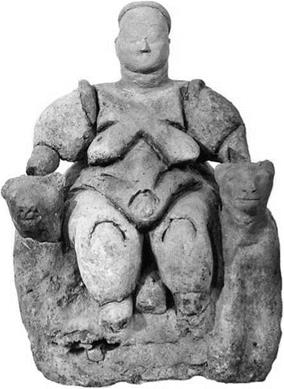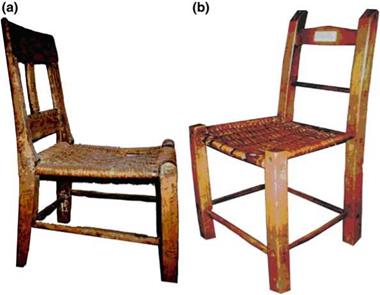![]()
Wood is an excellent construction material, which has been used by people for thousands of years for the production of building constructions, machinery, tools, interior design, including furniture, accessories, and even jewellery. In particular, pieces of furniture made from wood are structures, which sometimes have not changed their form and technical solutions for several millennia. Many excellent furniture models were the work of outstanding designers, who have mastered all the details with reverence. To this day, they are appreciated and recognised among connoisseurs and collectors of works of art.
Today, many countries have recognised design as a priority direction for the development of education and economy, seeing in it the quintessence of innovation and an opportunity to modernise European economy. However, it should be noted that modern furniture is not only the fruit of the work of individual architects and artists. Creating an attractive, functional, ergonomic and safe piece of furniture requires an effort of many people working in interdisciplinary teams, and to them, among others, this book is addressed.
The aim of the book is to present the principles of designing furniture as wooden structures. It discusses issues related to the history of the furniture structure, classification and characteristics in terms of the most important features essential during designing, ergonomic approach to anthropometric requirements and safety of use. It presents methods and errors of designing, characteristics of the materials, components, joints and structures, and rules of developing design documentation. It also raises the issue of calculating the stiffness and endurance of parts, joints and whole structures, including the questions of the loss of furniture stability and of resulting threats to health and even life of the user.
Jerzy Smardzewski
I. 1 Introduction
At the dawn of human civilisation, when the concept of furniture was not yet known, man, driven only by the need to make life easier, in a natural way used various objects made spontaneously by nature. A trunk of a tree felled by the wind or rock served as a place to sit (Fig. 1.1), a flat stone block served as a base for performing a variety of common work, and soft moss or woollen skins served as a bed. Over the years, as a result of the creative activity of humans, artefacts began to be made which replaced the spontaneously made objects mentioned earlier. Over the centuries, due to the preferences of societies that lived in a given age, their forms changed. New types of furniture were created that fulfilled specific functions: to sit, lie down, for work, for dining, storage and others.
Generally, the remaining furniture constructions from the first dynasty of ancient Egypt are accepted as the beginning of the history of furniture (the years around 3100-2890 B. C.) (Setkowicz 1969). Meanwhile, there is much evidence to suggest that furniture was manufactured and used by humans in the late Palaeolithic and early Neolithic period.
Historically, the most commonly used material for manufacturing furniture was wood. Archaeological finds, however, indicate that in steppe and permafrost terrains, stone, metal and animal bones, especially mammoth bones, were also used. Despite the fact that the reconstruction of prehistoric homes with their equipment is not possible, there is not the slightest doubt that they housed furniture. Archaeological discoveries in the pool of the middle River Don (among others, in the region of the village of Kostienki near Voronezh 16) indicate that in this area, groups of mammoth hunters continued a semi-sedentary lifestyle, also in the period after maximum glaciation (the second pleniglacial, i. e. after 18 thousand-17 thousand years ago) (Kozlowski 1986; Escutenaire et al. 1999; Svoboda 2004). Such a lifestyle was conducive to the creation of innovations, which preceded the civilisation achievements of the first sedentary farmers and breeders. These
© Springer International Publishing Switzerland 2015 1
J. Smardzewski, Furniture Design,
DOI 10.1007/978-3-319-19533-9_1
 |
innovations include many areas related not only with settlement and economic strategies, symbolic culture and religion, but also with material culture. The building type, for both residential ground buildings and half dugouts, was characterised by unprecedented soundness and stability. Due to a lack of wood, caused by the gradual disappearance of trees in the periglacial steppe environment, mammoth bones were used to build foundations, and also the construction of walls and ceilings of structures.
The first houses built almost only from mammoth bones we know from Moravia (e. g. Milovice), as well as from eastern Europe: from Kostienki, approximately 18 thousand-17 thousand years B. C. (Anosovka II site, cultural layer Ia), and established 16 thousand-14 thousand years ago in the River Dnieper basin (sites— Mezhirich, Mezine, Dobranichevka in Ukraine) (Svoboda 2004).
The main theme that is presented in Palaeolithic arts is a woman’s figure with strongly marked gender features, occurring during the period 30 thousand-20 thousand years ago throughout all of Europe from the Atlantic Ocean to the River Don, known as the so-called Palaeolithic Venus (Softer et al. 2000). The woman presented in Fig. 1.2, on the contrary to many other figures of Venus, is sitting on a seat especially designed for this function. This indicates the fact that, regardless of the lack of reconstructions of complete homes from that period, people of the Palaeolithic Era not only made tools that were necessary to acquire food and its processing, but also made usable objects, including furniture.
Fig. 1.2 Venus figure from Gagarino approx. 21000 B. C. (Gorodnjanski V.). Gagariono is located on a loess terrace on the north lip of a ravine on the right bank of the Don River about 5 km north of the junction of the Sosna, a tributary stream. It is north of the well-known Kostienki sites
 Therefore, it seems that upper Palaeolithic mammoth hunters of the periglacial steppe, due to their semi-sedentary lifestyle, over 10 thousand years earlier achieved a standard of development that came close to the Neolithic societies in the Middle East (Kozlowski 1986). This thesis is all the more likely because in the Middle East many innovations, such as the appearance of monumental architecture and stone sculpture, attributed to the peoples of the pre-ceramic Neolithic Era, was in reality, as recent discoveries in eastern Anatol show, the work of settled hunters and gatherers (today defined as “sedentary foragers”) in the eleventh-tenth century B. C. This indicates that many civilisation achievements did not depend directly on the production of food, but it was primarily the result of the sedentary lifestyle regardless of the type of farming.
Therefore, it seems that upper Palaeolithic mammoth hunters of the periglacial steppe, due to their semi-sedentary lifestyle, over 10 thousand years earlier achieved a standard of development that came close to the Neolithic societies in the Middle East (Kozlowski 1986). This thesis is all the more likely because in the Middle East many innovations, such as the appearance of monumental architecture and stone sculpture, attributed to the peoples of the pre-ceramic Neolithic Era, was in reality, as recent discoveries in eastern Anatol show, the work of settled hunters and gatherers (today defined as “sedentary foragers”) in the eleventh-tenth century B. C. This indicates that many civilisation achievements did not depend directly on the production of food, but it was primarily the result of the sedentary lifestyle regardless of the type of farming.
We know much more about the creative accomplishments of peoples living in Europe in the Neolithic Era. Near the most famous stone circle of Stonehenge, British archaeologists unearthed a huge settlement dating back to before 4.5 thousand years B. C. This discovery sheds new light on the role of Stonehenge. According to anthropologists, the people who built it also created a similar wooden construction.
|
Fig. 1.3 Interior of one of the households of the Neolithic village at Skara Brae: a stone cupboard, b stone beds (Photograph Nick Lee) |
Durrington Walls is the largest British wooden henge, and this site is the remains of the largest known wooden British settlements from the Neolithic Era (from before 6 thousand-4 thousand years B. C.). It was created exactly at the same time when the first boulders in Stonehenge were begun to be erected, that is about 4.5 thousand years ago. Today, there is no doubt that the settlement was inhabited by hundreds of people. In September 2006, archaeologists unearthed inside the ring a floor of eight houses. They found imprinted traces of beds and other furniture, the remains of fires placed in the middle of the house, and various household rubbish. The next two houses were found in the western part of Durrington Walls. They were surrounded by their own palisades and ditches.
Another interesting find, presenting the art of making furniture in the ancient times, is the Neolithic village of Skara Brae located on the western coast of Orkney in Great Britain, from 3200 B. C. In the reconstructed rooms of the old one-room households one can find: wardrobe, beds and cupboards made of stone (Fig. 1.3). The residents used this material mainly because of low forest cover on the island, therefore minimal resources of wood, which was used rather as a fuel than a raw material for making furniture.
The use of furniture in the Neolithic Era is also shown by the stone figurines of sleeping or seated figures of women (Fig. 1.4).
Prehistoric designers, like modern designers, paid particular attention to a comprehensive approach to designing, meeting both the requirements concerning a satisfactory appearance, as well as the necessary functions. In fact forms of furniture
 |
 |
constituted small architectures with legs designed like columns, in other cases they were parts of anthropomorphic forms of animal origin. Furniture design and their form changed from simple to intricate, depending on the period in which they were made. Some of the oldest, well preserved and described objects in museum collections come from the region of the former Mesopotamia, richly gilded furniture constituting the furnishing of palace interiors. We learn of many of them thanks to the good condition of parts of ancient furniture that survived to modern times, such as original parts of gilded Egyptian furniture buried together with the mummies of Pharaohs in the hot sands of the desert. The style and form of furniture evolved much more quickly than other forms of architecture, thus reflecting new ideas and innovative solutions of past designers. In many cases, however, one can conclude that the functionality of those structures still remains impeccable and timeless. Tables and chairs used by Egyptian workers in 2800 B. C. looked and were used identically as chairs of workers in the year 1800, of the Finnish peasants from the region of Yamsakoski (Fig. 1.5). Also Dutch painters of the seventeenth century and American painters of the early nineteenth century presented interiors of rural huts identically.
|
Fig. 1.5 Similarity of furniture structure: a chair with a plaiting, Egypt around 2800 B. C. (British Museum), b chair with a plaiting, Finland around 1930 (Heritage Park in Jamsankoski) |





